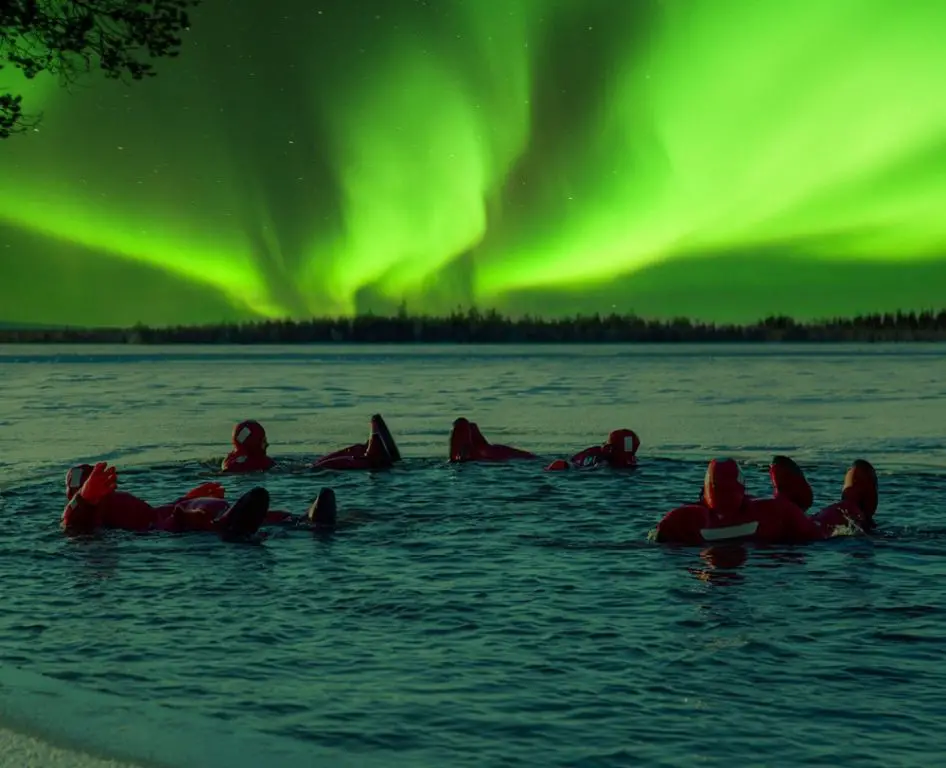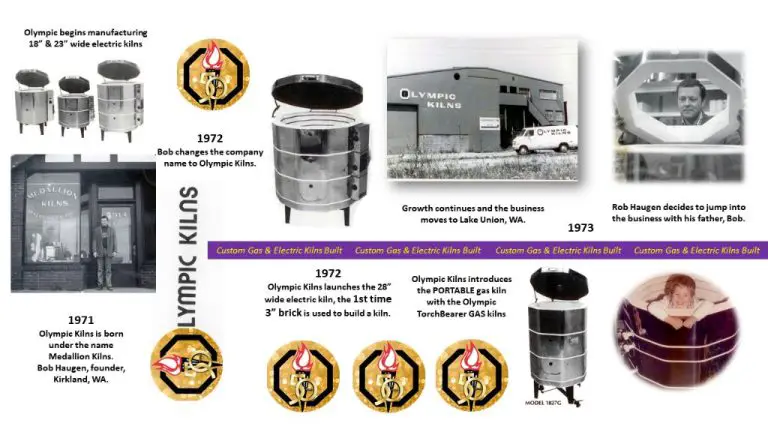Which 17 States Will See The Northern Lights?
The northern lights, also known as the aurora borealis, are a natural light display that occurs in the sky predominantly in high latitude regions. They are caused by collisions between gaseous particles in the Earth’s atmosphere and charged particles from the sun that enter the atmosphere (https://www.nationalgeographic.org/encyclopedia/aurora/). The northern lights generally appear as shifting green, blue, yellow, pink and purple lights in the night sky. They are visible in the northern hemisphere, and can be seen in many states in the northern U.S., as well as Canada, Iceland, Greenland, Norway, Sweden, Finland and Russia.
Alaska
Alaska is one of the best places in the United States to see the northern lights due to its high latitude location. According to Travel Alaska, Fairbanks, Alaska is directly under the “Auroral Oval”, which is the ring shaped region around the north magnetic pole where auroral activity is concentrated. This makes Fairbanks and other northern parts of Alaska prime spots for northern lights viewing. The best time to see the northern lights in Alaska is between September and April, when the nights are longest. Popular places to go on a northern lights tour in Alaska include Chena Hot Springs, Murphy Dome, and as far north as Barrow. For the greatest chance of viewing the aurora borealis, aim for a new moon and clear skies.
Maine
Northern Maine has prime viewing opportunities for seeing the northern lights. Due to its location in the northern hemisphere, the northern tip of Maine is directly in the auroral oval where the aurora borealis can frequently be seen. Under the right conditions, the dancing lights of the aurora extend across the sky in stunning displays of green, pink, purple, and red. Some of the best places in Maine to see the northern lights include:
Aroostook County, which sits right on the border with Canada, offers very dark skies perfect for aurora viewing. The northern lights can be seen here on average 100-125 nights per year when solar activity is high (https://visitaroostook.com/story/aurora-borealis-and-wide-open-skies).
Millinocket Lake is a prime northern lights viewing location, overlooking Mt. Katahdin and away from light pollution. The Northern Lights in Maine can be observed frequently from places like the New England Outdoor Center (https://www.neoc.com/northern-lights-in-maine-at-neoc/).
Other ideal spots include Baxter State Park, Acadia National Park, and Moosehead Lake. The best months for seeing the aurora in Maine are September through April when the nights are longest (https://www.visitmaine.net/northern-lights-maine/). With its optimal latitude and clear dark skies, northern Maine is one of the best places in the lower 48 states to observe the magical glow of the aurora borealis.
Michigan
The Upper Peninsula of Michigan is one of the best places to see the northern lights in the lower 48 states. This northernmost part of Michigan offers clear, dark skies away from light pollution, making it an ideal location for auroral sightings (sources: https://www.michigan.org/article/trip-idea/inside-secrets-viewing-northern-lights-michigan, https://www.uptravel.com/things-to-do/stargazing-northern-lights/).
Some of the best places in the U.P. to see the northern lights include Headlands International Dark Sky Park in Mackinaw City, Port Crescent State Park in Port Austin, and remote spots along Lake Superior like Copper Harbor and Marquette. The long nights and frequent clear skies make the Upper Peninsula one of the most reliable spots in the lower 48 to catch the auroras. Just bundle up and be prepared to stay up late waiting for the magical lights to appear.
Minnesota
Northern Minnesota offers some of the best opportunities to see the northern lights in the lower 48 states. This is because Minnesota’s Arrowhead region borders Canada, where auroral activity is more common. According to sources, prime viewing locations in Minnesota include:

The North Shore near Duluth, where scenic overlooks like Palisade Head and high vantage points along the shoreline provide a great perspective of the northern horizon. A popular spot is Skyline Parkway between Duluth and Two Harbors.
The Boundary Waters Canoe Area Wilderness, where lack of light pollution and open views make the northern lights visible on many clear nights. Check the forecast before portaging to an ideal viewing lake. Some options are Basswood Lake, Crooked Lake, and Sag Lake.
Itasca State Park, as recommended by local aurora chasers. The park’s numerous lakes provide reflective surfaces to enhance the lights, and tall pines frame the colorful display.
For best viewing in Minnesota, check the forecast to time your trip when geomagnetic activity is high. The lights are most visible in late fall and early spring when nights are longest. With the right conditions, the northern lights can create an unforgettable spectacle over the Minnesota wilderness.
Montana
Montana is one of the best places in the continental United States to view the northern lights. This is due to Montana’s northerly latitude, low light pollution in rural areas, and frequent clear nights. The best viewing site in the state is Glacier National Park, specifically the northern areas near the Canadian border. Popular spots include Lake McDonald, Looking Glass Road (Hwy 49), Bowman & Kintla lakes, and Bison Valley north of Polebridge
Ideal conditions for seeing the aurora in Montana are cold, clear winter nights during periods of solar activity. The months between September and March offer the highest probability. Some key tips are to get as far away from city lights as possible, find an area with a clear view of the northern horizon, and check the forecast on apps like Aurora Notify to know when a solar storm may cause auroras.
New Hampshire
The northern lights have been known to appear in the far northern parts of New Hampshire, though sightings are rare and usually very faint. According to WOKQ, the northern lights illuminated the sky over Lake Winnipesaukee back in November 2022, a rare occurrence for the state. The best spots to potentially catch the aurora borealis in New Hampshire are in the far north near Mount Washington and north of the White Mountains. This is because the northern lights occur more frequently at higher latitudes closer to the North Pole. New Hampshire Public Radio notes that sightings usually happen near Mount Washington, the highest peak in the northeastern United States at 6,288 feet elevation.
New York
Upstate New York, particularly areas near the Canadian border like Watertown, Plattsburgh, and Potsdam, have some of the best chances of seeing the northern lights in the lower 48 states. This is due to New York’s high northern latitude and proximity to the auroral oval, the zones around the north pole where the aurora is most visible. When solar activity increases, the aurora extends further south and can be observed from northern New York.
Ideal viewing conditions are on clear, dark nights with an active geomagnetic forecast. Keep an eye out for green, red, or purple lights dancing across the northern horizon. Some of the best viewing spots in New York include Whiteface Mountain, Lake Placid, the Adirondack Mountains, and along the shores of Lake Ontario and the St. Lawrence River where the northern sky is visible. With the right timing and a bit of luck, New Yorkers can occasionally witness the spellbinding beauty of the northern lights.
According to the Aurora Viewline from NOAA, the northern lights may be visible as far south as Albany and Syracuse during periods of high activity.
North Dakota
North Dakota is one of the best places in the continental United States to view the northern lights. The sparse population and low light pollution in central and northern North Dakota provide prime conditions for seeing the aurora borealis. Some of the best places in North Dakota to see the northern lights include Theodore Roosevelt National Park, the Turtle Mountains, and the International Peace Garden which sits on the border with Canada (North Dakota Tourism). Towns like Rugby, Bottineau, and Devils Lake are popular spots for stargazing as they are far from major cities. The long, cold winters in North Dakota also provide many clear nights perfect for aurora viewing (Only In Your State). With North Dakota’s sparse population and optimal location, northern lights can be seen on many nights during the fall, winter, and spring when skies are clear and dark.
South Dakota
South Dakota is one of the best places in the Lower 48 to view the northern lights. According to the South Dakota Aurora Notification Group on Facebook, experts predict 2024 will bring the most spectacular northern lights displays in over 20 years, with visibility extending farther south than usual across the state.
The western and central parts of South Dakota generally offer the best chances at seeing the aurora borealis. This is because they are farthest from light pollution and have wide open views of the northern sky. Cities like Rapid City and Pierre are prime spots, especially at higher elevations facing north.
Ideal conditions for viewing happen when solar activity is high and the night is clear and dark. The NOAA Space Weather Prediction Center forecasts the best viewing between 10pm-2am local time (Source: Argus Leader). With the right timing and a little luck, the dancing lights can come down as far south as the Nebraska border. West River offers front row seats to this dazzling natural phenomenon.

